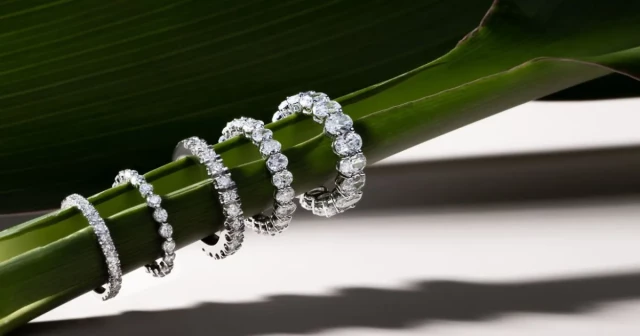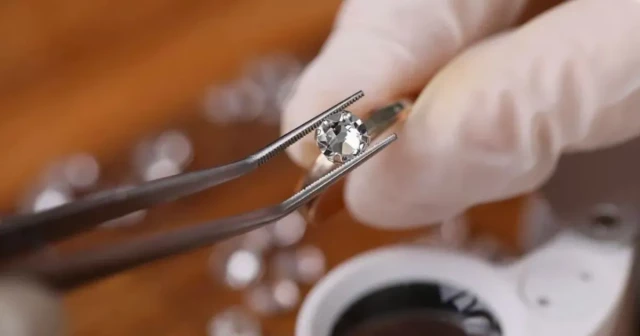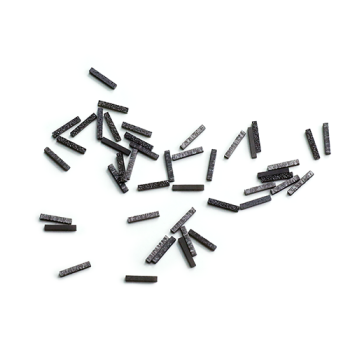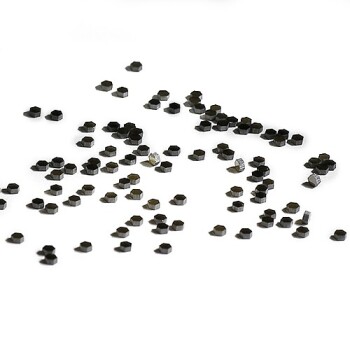Introduction to CVD Diamonds
CVD or Chemical Vapor Deposition diamonds are lab-grown diamonds that have the same physical and chemical properties as natural diamonds. These diamonds are formed by introducing a mixture of gases into a vacuum chamber where they are heated to extremely high temperatures. The carbon atoms in the gas settle on a substrate, forming a diamond crystal. CVD diamonds are often indistinguishable from natural diamonds, making it essential to have them tested and verified by a reputable lab. While they are less expensive than natural diamonds, they are an excellent option for those looking for a high-quality, ethically sourced diamond alternative.
Table of Contents
Difference between CVD and natural diamonds
When it comes to buying a diamond, it's important to understand the difference between a naturally occurring diamond and one produced using CVD (Chemical Vapor Deposition) technology. Natural diamonds are formed over millions of years deep within the earth's mantle, while CVD diamonds are man-made and created in a lab.
Origin
The main difference between CVD diamonds and natural diamonds is their origin. Natural diamonds are formed through a natural geological process, while CVD diamonds are artificially created in a laboratory.
Appearance
CVD diamonds and natural diamonds may appear similar to the naked eye, but there are subtle differences that can be identified with the help of magnifying equipment.
Price
CVD diamonds often have a lower cost than natural diamonds, making them an attractive option for those on a budget. However, it's important to purchase from a reputable dealer and to ask for a certification that verifies the diamond's authenticity.
Environmental Impact
CVD diamonds are created in a lab using advanced technological processes, and they do not negatively affect the environment or any living creatures. On the other hand, natural diamonds can have a harmful impact on the environment since they are mined from deep within the earth's mantle.
Inclusions and Impurities
CVD diamonds are made using a specific method developed to create pure gemstones, which means they do not have any impurities such as boron and nitrogen. However, CVD diamonds do have inclusions, just like natural diamonds and HPHT diamonds.
Thermal Conductivity
Another way to identify a CVD diamond is by using a thermal conductivity probe to measure the diamond's heat conductivity. Natural diamonds tend to conduct heat better than CVD diamonds, which have a lower thermal conductivity.
In conclusion, the difference between CVD and natural diamonds is significant, and it's important to be able to identify which type of diamond you are buying. While CVD diamonds are a great alternative for those on a budget, natural diamonds have their own unique attributes that make them valuable. Ultimately, the choice between the two depends on personal preference and individual circumstances.
Specialized Equipment Needed for Identification
Identifying a CVD diamond requires specialized equipment. The diamond has to be tested for its physical and chemical properties, which are different from natural diamonds. Some of the equipment used in identifying CVD diamonds include:
Spectroscope
A spectroscope is used to identify the absorption and emission spectra of a diamond. A CVD diamond will often display a different absorption spectrum than a natural diamond.
Raman Spectrometer
A Raman spectrometer measures the vibrational modes of molecules in a diamond. CVD diamonds typically have a different vibrational pattern compared to natural diamonds.
Microscope
A microscope can be used to examine the diamond's growth features, such as the presence of inclusions or color zoning. CVD diamonds may have different growth patterns compared to natural diamonds.
The GIA researchers subjected synthetic diamonds to an extensive battery of tests. The tests included several sophisticated types of spectral analysis to obtain a telltale “signature” of samples created by the CVD process. By using advanced instrumentation, scientists can read the diamonds’ spectral signature to determine their composition, or whether they originated in nature or a laboratory. The GIA researchers also conducted standard gemological tests, including checking for features known to be diagnostic for other synthetic diamonds, such as graining patterns and ultraviolet fluorescence reactions.
Despite the difficulty in spotting these stones by conventional means, GIA researchers did find unique spectroscopic signatures. They did so by subjecting photoluminescence and ultraviolet fluorescence reactions to the DiamondView™, a sophisticated instrument used by gemological labs to detect synthetic diamonds.
In summary, specialized equipment is necessary to identify a CVD diamond. By knowing how to check if a diamond is CVD-produced, buyers can make informed decisions about their purchases and avoid potential scams.
Importance of Submitting Diamond to a Lab
When it comes to determining whether a diamond is CVD-produced, submitting it to a laboratory for testing is crucial. While there may be some visual cues that your diamond is synthetic, such as a lack of inclusions or a too-perfect cut, these are not foolproof indicators. Here's why submitting your diamond to a lab is important:

Advanced Testing Methods
A lab will use advanced testing methods, such as spectroscopy and microscopy, to determine the diamond's origin. These methods can accurately detect the presence of impurities or other elements that may indicate whether the diamond is natural or synthetic. By submitting your diamond to a lab, you can have peace of mind knowing the true origin of your diamond.
Determining the Value
It is important to know if your diamond is CVD-produced because synthetic diamonds are worth less than natural diamonds. By submitting your diamond to a lab, you can determine its value and make informed decisions about its significance. This is especially important if you are looking to sell your diamond or include it in an appraisal for insurance purposes.
Ethical and Sentimental Reasons
Some people prefer natural diamonds for ethical or sentimental reasons. By submitting your diamond to a lab, you can ensure that it is a natural diamond and not a CVD-produced one. This can provide peace of mind for those who are concerned about the environmental impact of diamond mining or who want to ensure that their diamond has a certain sentimental value.
Avoiding Fraud
Submitting your diamond to a lab can also help you avoid fraud. Some unscrupulous sellers may try to pass off CVD-produced diamonds as natural ones in order to make a higher profit. By having your diamond tested by a lab, you can ensure that you are getting what you paid for and avoid being scammed.
In conclusion, submitting your diamond to a lab for testing is crucial in determining whether it is CVD-produced and ensuring its true value and origin. It is also important for those who have ethical or sentimental concerns about their diamonds and want to avoid fraud. By using advanced testing methods, labs can accurately determine the diamond's origin and provide peace of mind for diamond owners.
How to Check if Your Diamond is CVD-Produced
When it comes to buying diamonds, it is important to know if your diamond is natural or synthetic. One of the newest methods of producing diamonds is Chemical Vapor Deposition (CVD), and it is important to know how to check if your diamond is CVD-produced. Here are some ways to identify a CVD-produced diamond:

Have it tested by a professional gemologist or diamond laboratory
One of the most reliable ways to check if your diamond is CVD-produced is to have it tested by a professional gemologist or diamond laboratory using specialized equipment. They can analyze the diamond's chemical composition and determine if it is natural or synthetic.
Look for tell-tale signs
Another way to check if your diamond is CVD-produced is to look for tell-tale signs such as unusual patterns of inclusions, lack of fluorescence, and a flat or metallic appearance under certain lighting conditions. The presence of certain elements like nitrogen can also indicate whether or not a diamond is natural or synthetic.
Ask for documentation or certifications
Some jewelers may be able to provide documentation or certifications that verify the origin of the diamond. This can help you ensure that you are getting what you paid for, and avoid any potential scams or misrepresentations.
In conclusion, as the popularity of synthetic diamonds continues to grow, it is important to know how to check if your diamond is CVD-produced. Whether you have it tested by a professional gemologist, look for tell-tale signs, or ask for documentation, taking the time to verify the origin of your diamond can help you make an informed decision and avoid any potential scams or misrepresentations.
Related Products
- Custom CVD Diamond Coating for Lab Applications
- Microwave Plasma Chemical Vapor Deposition MPCVD Machine System Reactor for Lab and Diamond Growth
- CVD Diamond Dressing Tools for Precision Applications
- CVD Diamond Cutting Tool Blanks for Precision Machining
- CVD Diamond for Thermal Management Applications











